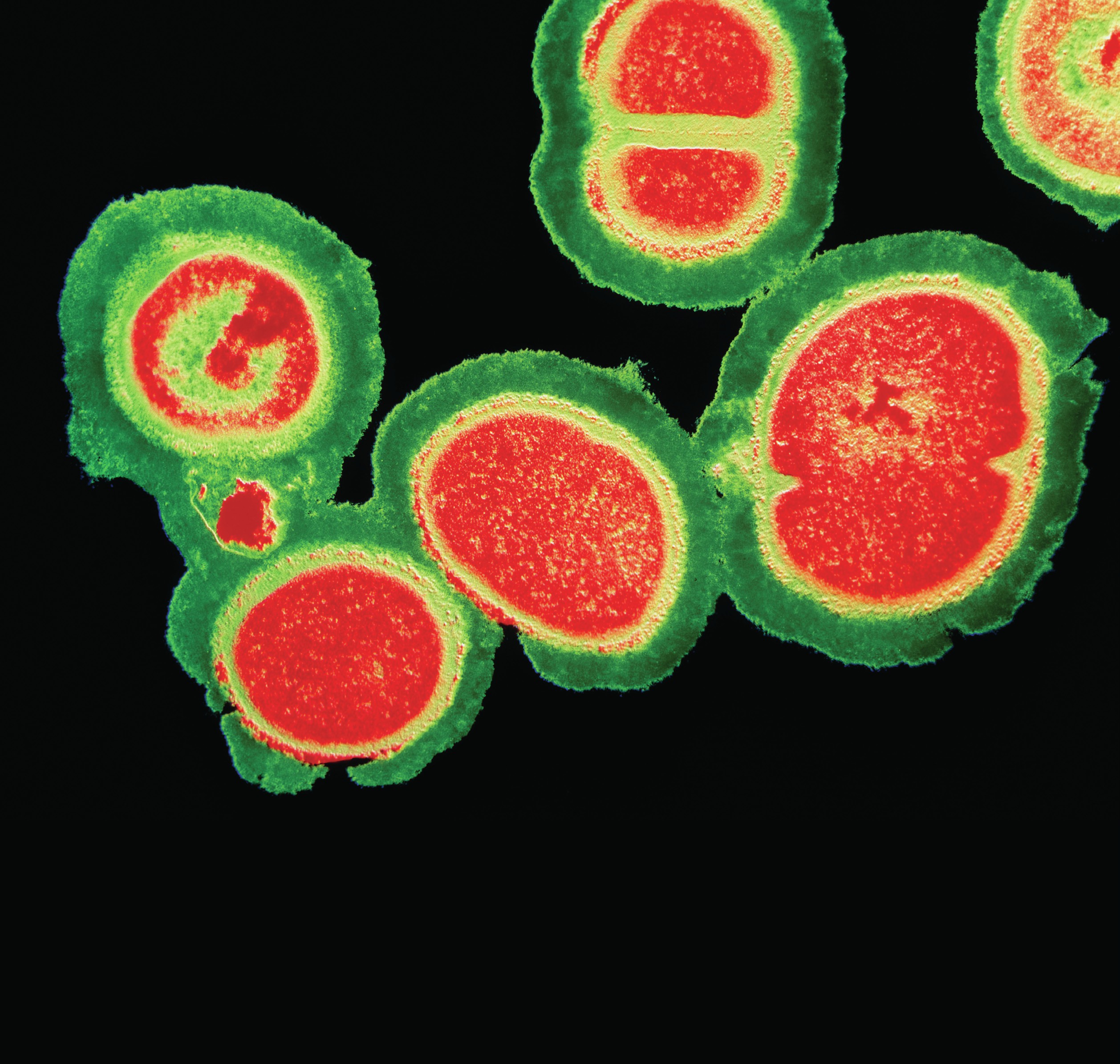
Just over 40 years ago, the surgeon general of the USA announced that ‘the time has come to close the book on infectious diseases’. It seemed that chemists had finally won the battle against bacteria. Nowadays, we know better (or worse). The continuing development of resistant strains of bacteria has forced chemists to reopen that book in the search for new antibiotics that are effective against ‘superbugs’ such as MRSA (methicillin-resistant Staphylococcus aureus, see photo above).
For bacteria, as with all living things, it comes down to ‘survival of the fittest’. But unlike most other organisms, bacteria have such a short generation time, as little as 20 minutes, that the process of evolution can occur rapidly. At a single infection site there can be millions of bacteria, which are multiplying at a tremendous rate. Each time a bacterial cell divides, it has to copy all of its DNA (Box 1) and there is a good chance that a mistake will be made during the copying process: a mutation. Some mutations can be bad for the bacterium, making it ‘less fit’ and more likely to die. Some mutations have no impact at all, but other mutations can be of benefit. When you start to think about the numbers of bacteria involved, the odds of just one of them mutating to make it resistant to an antibiotic are pretty high. If the rest of the bacterial colony were killed by an antibiotic, only the resistant mutant bacterium would survive and this could multiply, founding a new antibiotic-resistant strain.
Your organisation does not have access to this article.
Sign up today to give your students the edge they need to achieve their best grades with subject expertise
Subscribe




